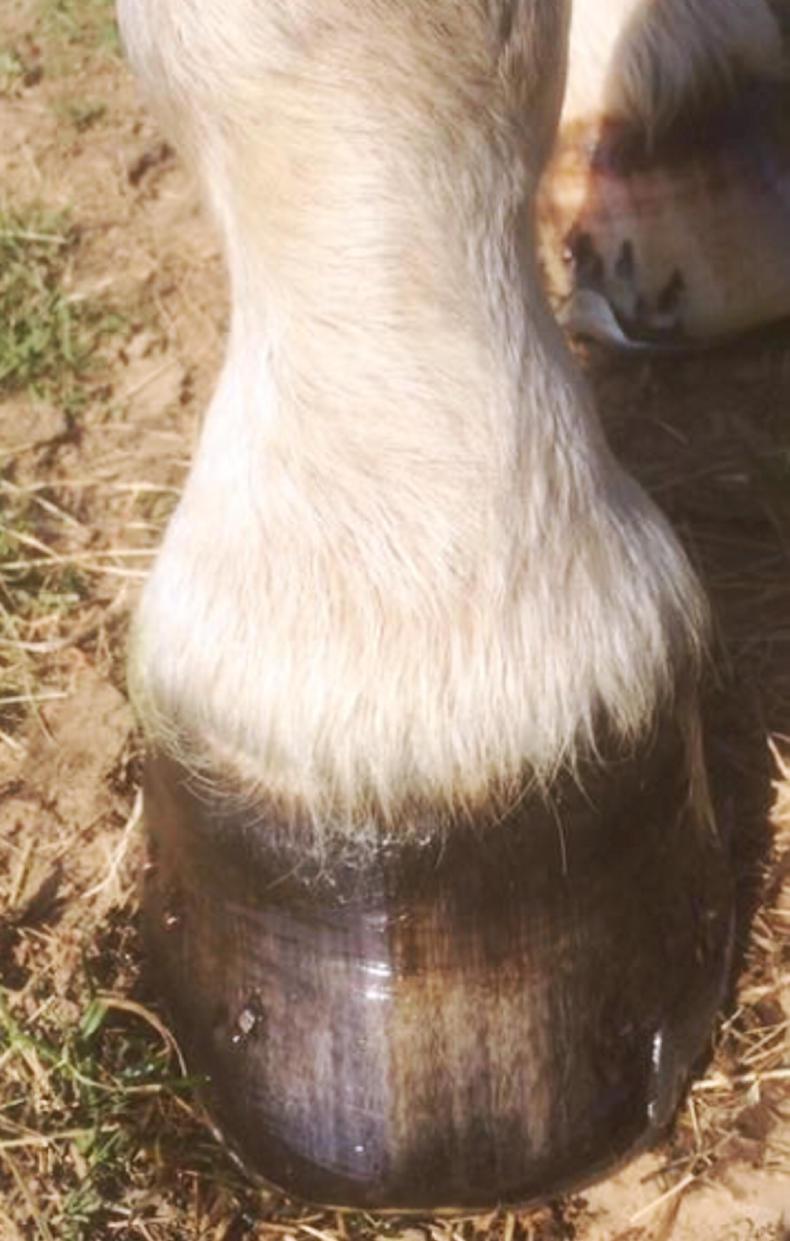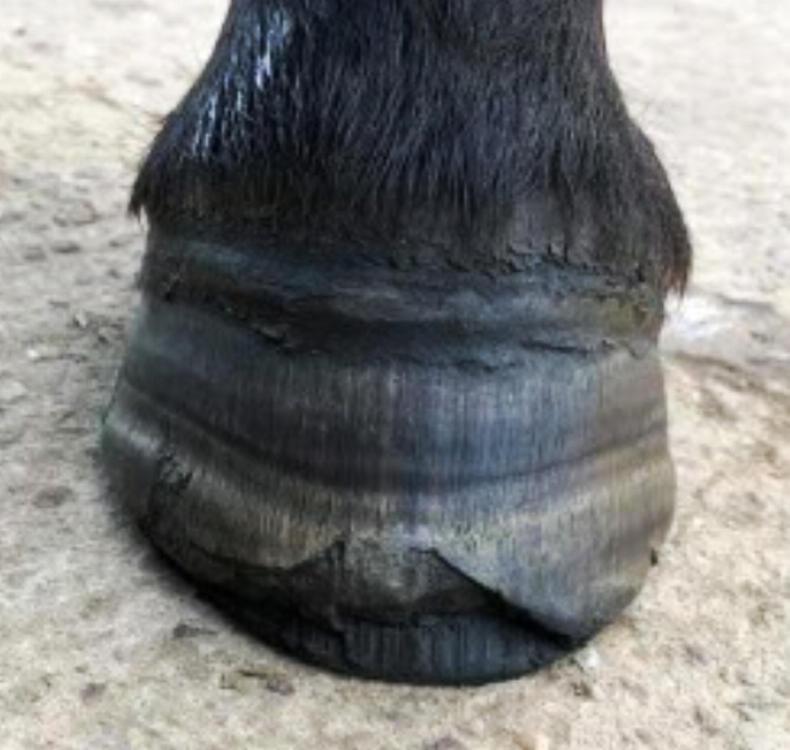HOOF Wall Separation Disease (HWSD) occurs due to a genetic mutation caused by a single mutated gene, and is known as an autosomal recessive genetic disorder. If a pony has two copies of this mutated gene it makes that animal an affected (HWSD/HWSD) animal, i.e. all four hooves are affected. Defects occur in the horn of the dorsal hoof wall.
It is purely a genetic state and works in a similar way to the ‘blue-eyed cream gene’. However, the HWSD mutation can cause severe debilitation. The condition may have no obvious visible signs, or may present itself as slightly affected, to very severely affected, and it is not yet understood why the visible signs can suddenly manifest themselves.
The environment plays no part in causing the condition, however environmental conditions may help in the management of the less severely affected pony. Management in such cases is critical, and trimming and attention to the hooves may be necessary as often as at three weekly intervals. All ponies must be treated as individual cases. In very severe cases which can’t be managed euthanasia may be necessary.


What do these two photos have in common? Both ponies have HWSD!
In an affected pony the outward clinical signs of HWSD
IT is important that the HWSD condition is eradicated from the herd, both from a marketing point of view and that of animal welfare. To achieve this the Connemara Pony Breeders Society have already taken several steps:
However, the breeder must play a very important part to achieve eradication of HWSD by responsible breeding.
Genetic testing of a pony will give one of three results:
An Affected x Affected cross should not be considered as this will result in an affected offspring ie. HWSD x HWSD 100% result affected. A carrier pony alone merely carries a single copy of the gene and will not display any HWSD related disability. However, a carrier pony bred to another carrier pony, will result in the following: N/HWSD x N/HWSD Importantly to maintain diversity in the herd it is acceptable to breed a carrier to a non-carrier: N/HWSD x N/N This cross cannot result in an affected (HWSD/HWSD) pony as genetically it is not possible. It cannot be predicted which other genes will be passed on. It is important to note from this cross that there is then the option for the breeder to choose future breeding animals that are free of the condition, thus potentially further reducing the carrier percentage within future generations. The breeder can make a choice and this is where responsible breeding is important, the responsibility being for the good of the herd, to strive for a healthy HWSD free population. The Non-Carrier x Non-Carrier cross also has its part to play: N/N x N/N As this cross excludes carriers it is entirely free of the HWSD gene and is therefore totally free from the genetic condition. If the N/NxN/N cross is used exclusively by breeders in the coming generations, it will limit the gene pool in an already jeopardized situation and may cause unknown and unwanted traits to manifest themselves – there is still a place for using such a cross but it should not be used exclusively if genetic diversity in the herd is to be maintained. THERE are affected ponies leading useful lives, but the welfare of the pony is paramount. This welfare comes at a price to the owner. It is important to realise that whilst only a small percentage of the pony population is affected, breeders must know the status of the ponies they are using to breed, breed responsibly to eradicate HWSD and preserve the herd to the breed standard. It is our duty to the Connemara pony. The study of HWSD is now on the syllabus of the Irish School of Farriery. Should a genetic test be required to confirm/rule out a diagnosis, please contact the Connemara Pony Breeders’ Society or visit our website at www.cpbs.ie.